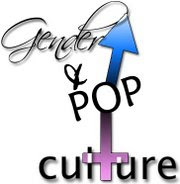Despite the generally understood fact that patriarchal societies exist, and exist in some form in almost every culture, the word itself elicits a certain level of defensiveness, not only by males who feel guilty, but also by females who refuse to acknowledge that they too are part of the system. The confusion lies mainly in the failure to understand the difference between patriarchy as a type of society and the people who participate in it. As it so happens, being part of this system does not necessarily imply taking specific actions to advance sexist stereotypes, nor does it imply oppressing women in any kind of obvious way. However, one’s inaction or decision to stand idly by when hurtful or oppressive comments are made indicates a choice if not to actively support patriarchy then certainly not to hinder the advancement of various prejudices. The simple fact of the matter is that most men feel that sticking up for women (or for that matter any frequently ridiculed group) will make them look too sensitive. Unfortunately, solving a problem proves difficult when the problem is not acknowledged by the population that continually strengthens it, albeit unknowingly at times.
Determining why oppression occurs in seemingly innumerable ways proves to be an exercise in futility. However, understanding our context within the system can at the very least give us the opportunity to make certain changes, even if only on a very small scale. As Johnson so perfectly elucidates, our participation both molds our lives and gives us the chance to either change or perpetuate the issue (p.93). Patriarchy is so deeply ingrained in our society that it seems nearly impossible to break out of the social constraints that we, to a large degree, have put on ourselves.
In order to attempt to change the generic mindset of male domination, one must first acknowledge the reality of the situation. The goal must be to comprehend the social roots of the problem in order to understand where certain philosophies originate (p.92). Trying to change the world is about as logical as teaching abstinence-only sex education, for the simple fact that it denies inherent inevitabilities of life. A certain population of people is so set in their ways that expecting some sort of epiphany is an utter waste of time. With that being said, there is always hope that the situation can be improved significantly if not remedied entirely. One must also acknowledge that change is neither a quick nor an easy process, and expecting it to be is pointless.
Despite the advancements in women’s rights in recent years, and particularly in the latter half of the 20th century, men and women alike still perpetuate certain stereotypes. When men and women are defined as opposites, men as strong and women as weak, women as more loving parents and men as the bread winners, these expectations can sometimes become self-fulfilling prophecies. This is most-assuredly not true of the entire population, but some people act in certain ways in the belief that they are required to adhere to societal norms. This includes “acting ladylike” or being “one of the guys”, and until this conformity is diminished, no alternate solution even seems viable.
Determining how to change such deep-seated beliefs is without question an uphill battle. Anyone who attempts to alter the values that are widely accepted by those living in patriarchal societies flies in the face of literally thousands of years of male privilege and domination. The important vision that we must understand is that as individuals, we all in some way support patriarchy, even if entirely unintentionally (p.98). Only upon realizing this can we adequately assess how we participate in the system and then try to alter our behavior. As the old cliché goes, the first and most crucial step is admitting that there is a problem and blatant denial leaves little room for improvement.
It’s hard to draw the line between vision and strategy in this case, because as one might expect, the entire article makes the point that there is by no means an easy solution to this problem. The necessary steps that must be taken in order to improve the situation begin with self-realization and acceptance of a very real problem that often goes ignored or unnoticed. Once this is achieved, the natural progression would be for people to feel confident enough in their beliefs to defend them openly. This, however, does little to change the mindsets of those people who are too deeply consumed by their own narrow-mindedness to listen to any logic whatsoever. Ultimately, the process is arduous, but even small steps must be looked upon as significant achievements if coupled with similar steps from a majority of the population.

